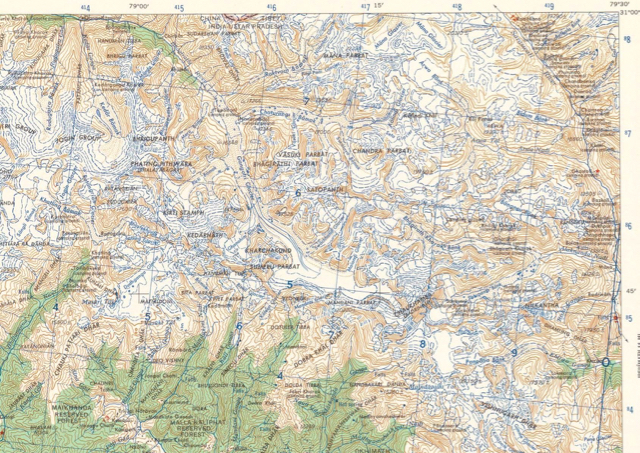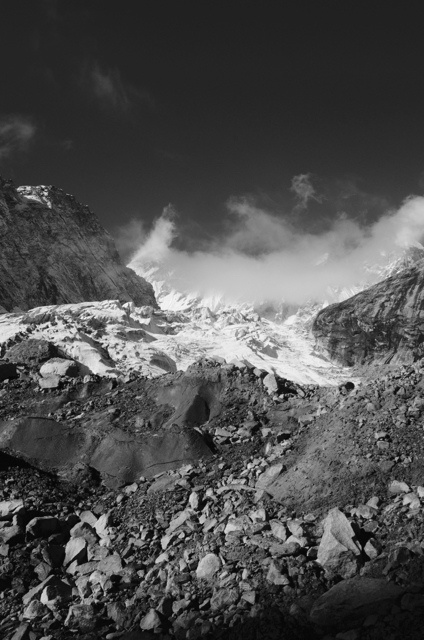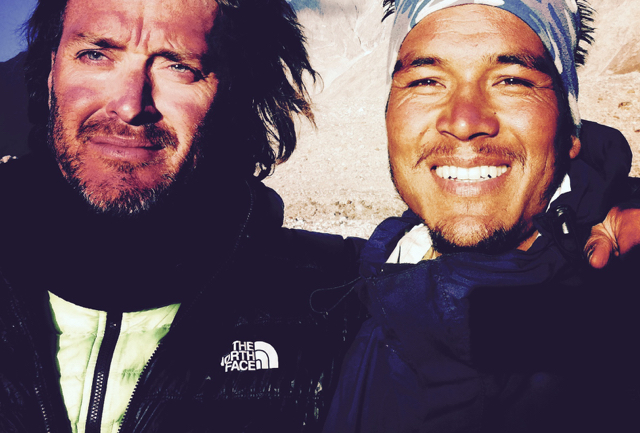Our departure nears from here in Hong Kong’s heat to India’s northern Himalaya range and the ascent to Gangotri glacier. From the heavens it is said, the Ganges River descended at Gangotri (‘Ganga’ meaning river, and ‘Utri’ meaning descended) and despite the heat and blur of Hong Kong, this simple image of water descending from the skies stays with me. It will be a welcome swap of heavy humid air for clear brisk stuff but the magic lies in the transition from one to the other. My kit lies in scrappy piles that are tidied and then scrapped again, as pieces of gear are temporarily lost and then found once again.
It is the time when I finally imagine all of the various pieces and items packed up, tucked away and no longer visible. As many times as I’ve prepared for these journeys upwards and into the mountains it is always the same. I start with too much, knowing full well it is too much, but needing to whittle it down nonetheless. It pleases to cut things out and remove. It pleases too to know there are absolutes that will be needed. Some little books, the inevitable tea, solar panels, the requisite undergarments, and a small army of camera kit all await their final deposit into the smoke tinged red bag that is a scarred veteran of dozens of journeys into the heights.
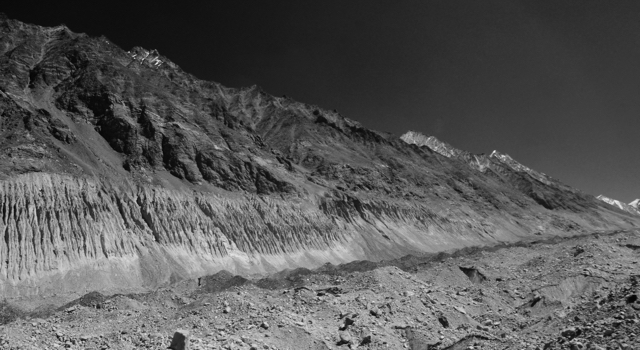
A long diagonal strip of moraine ripples like a false floor. It is such forms that make up much of what is referred to as glaciers.
Peering at maps, reading bits of lore that good friend Dilip Talekar (a huge bow of thanks to you Dilip) sends from his many times up the route we will tread, and imagining all of the blips and sounds of the mass of city life ebbing away. It’s not that these bangs and muffles they won’t exist momentarily in the mountains; they won’t exist at all up there. They will give way to muddled voices, swishes of wind currents and tent zippers. Huge gaping silences that suck sound await. One of the sounds that does await us is the roar of water that comes out of the mountains with impunity. It is the water and its solid but fleeting forms of ice that Debra Tan and I have come for. These temples of ice are disappearing and ebbing across the expanse of the Himalayas. Our upcoming journey’s aim beyond simply being amidst all of the wonder, is to ascend to, explore and live upon the source glaciers for one of the globe’s precious waterways. It is too to document ice in all of its mottled forms. Beyond simply the aesthetic masterpieces of azure blue, huge expanses of stone and silt laden moraine sits in gaping valleys.
It is said that Shiva was the very first yogi, and the name Ganga or Ganges was given to the River Bhagirathi which originates at Gomukh. The wonderful tale continues that the Holy Ganges River was once a celestial river called the Akash Ganga (Akash – sky or space, and Ganga – river). Akash Ganga is the Hindu mythological equivalent of the Milky Way. Akash was convinced to come down from the heavens by King Bharigath. She descended into the locks of hair of Shiva and broke up into several channels. Thus in many paintings of Shiva, one can see the Ganga River issuing from his locks.
Mountains have long beckoned not simply for their ‘away-ness’ or for their all-powerful winds. They beckon for the space they allow in the head and the effort that cleans out the detritus. In the words of a Tibetan trader, “In the mountains, there is that that matters, and that that doesn’t”…and there was much that really ceased to matter in the mountains.
Alongside the water in its various forms and the winds, we’ve come too for the beings that reside on high for it is them that carry the tales, the ways, and visions of the mountains’ sacred role. Their tales of are of memories, of experience and of tales that steep backwards in time from generation to generation.
One of the figures that we’ll meet with is a swami who has lived in Gangotri for 60 years. In his time he climbed, observed, and breathed in the mountains’ every shift and the water’s every turn. Context is vital for an ascent and for any wanderings in the mountains sanctuary. Wisdom too is needed, otherwise the ascent – however personal and deeply felt – isn’t quite the same journey. 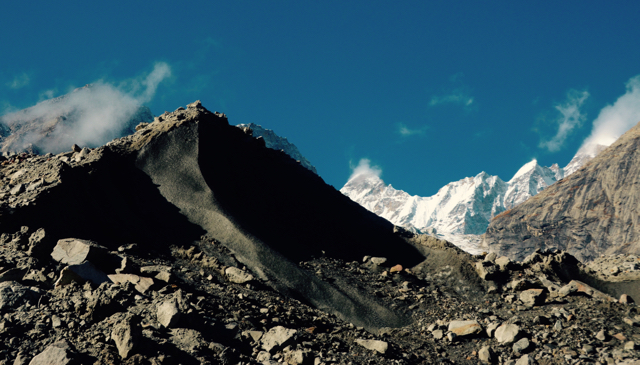
An addition which will make the whole Glaciers’ Breath ll expedition that much more timeless is the cooperation with Colorado State University’s Julia Klein, Sarah Whipple, Patrick Donovan and Mountain Sentinels to create a living map of the route using ARCGIS.
The journey too will be a chance to reconnect with the gracious Kapil Negi who will host and interpret, mountain god and brother, Puran Thakur, and the remarkable chef and speaker to the deities, Karma.
Less than a week now remains before one of those flying tubes of steel, a plane, will arrive to Uttarakhand and words will become steps.
More updates to follow

